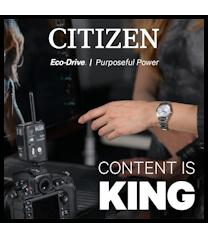Tend to Your Digital Footprint
Today, digital is a must for business.
The pandemic shook many out of the lull they were in that digital marketing was just another tool in the toolbox to realize that it is absolutely essential to business resilience.
In the past year, as many companies have been ramping up their digital investment during COVID, brands must embrace a regular assessment of their company’s digital footprint, while also being proactive in promoting their brand.
“We’re all familiar with the dynamic landscape and explosive growth of online shopping, a consumer shift accelerated with the onset of COVID in early 2020. But a brand’s digital presence, aka digital footprint, is something that must be monitored and maintained regularly,” advocates Derek Kristopher is the associate director of marketing for the New York City-based manufacturer S.D.C Designs in a Plumb Club podcast, ‘The Digital Transformation’.
“Your digital footprint is the digital trail your brand creates and/or leaves behind on the Internet, including your website, social media, emails, review sites, relevant affiliate sites that link back to your site and social pages, anywhere your company or brand name may appear,” Kristopher explains. “The tentacles are far reaching. Some of it is in your control and some of it is not. But, it’s critical to track your digital footprint, while proactively promoting your brand.”
Kristopher underscores the importance of identifying, maintaining and constantly evolving your digital presence to keep customers aware of your brand. With modern technological advancements and consumer expectations evolving, the days of creating a website and leaving it alone are long gone. “Your website must be more than a digital billboard,” he says. “It must be as much of a store, a living entity, as your brick and mortar.”
Sizing Up Your Footprint: A simple way to assess your digital footprint is to type your brand name into a Google search and review the results, suggests Kristopher. Look at your branded content and the channels you control, like website, blog, social media, email/enews. Then look to third party sites where you might be mentioned, such as online publications, review sites, brand inclusion on partner pages, and other online distribution channels.
Just like in traditional retail where you have to maintain a store presence by cleaning showcases, seasonal rearranging, and freshening up displays, there’s similar maintenance online, relates Kristopher, noting that it just happens faster in a 24/7/365 world. The lack of an off-button is a big reason a brand’s digital footprint needs regular tending.
Managing Your Digital Presence: Brands need to be proactive to shape and control their online identity and reputation, says Kristopher, underscoring that analyzing your digital presence should be more than a one-time exercise. Assign the task of management to a point person or team to regularly monitor web traffic and any content that pops up that’s not in your control, like review sites.
Thom Duma, owner of Thom Duma Fine Jewelers, Warren, Ohio advises fellow jewelers to reply to every review, even the bad ones. He says it shows customers that you’re invested in long-term relationships, not one-off sales. Respond promptly to negative reviews. Assess and evaluate the feedback internally before publicly responding. Be professional and positive, state the facts, while respecting their opinion. Kristopher views a bad review not as a problem, but the result of a problem, and an opportunity to show how you handle problems.
Customer interaction software, like Podium or Clientbook can make it easy to collect and manage reviews in one centralized platform. The links from these apps eliminate trying to find you on Google, Yelp or Facebook to leave a review. In fact, Duma encourages getting customers the link to leave a review right away when they’re happy, so they’re more inclined to respond quickly.
Keep Content Fresh & Accessible: Consumers may visit your site multiple times before making a purchase, says Kristopher, so consider having a dedicated spot, like on the home page, for breaking news updated daily (i.e. product launches and event announcements). He suggests using a simple calendar to manage future product offerings, content and promotions. Plan by month, quarter or season, but lay it out strategically for the year. Having a consistent strategy will help customers feel at home when they visit your page.
Mix it up, a product shot here, a video there, then a lifestyle image. “Consistency and organic content are most important,” believes Kristopher. “Decide how many posts are within your comfort zone and budget. Post authentic and on-brand content curated specifically for your customers.” He underscores that it must be a holistic view, unifying all digital touch points.
Ellen Seckler, CMO, Citizen Watch America, in a Plumb Club podcast ‘Content is King’, notes that as good as it is to create all this content; it’s important how it is saved and stored. “The metadata, that’s how search engines find content. It’s really important to have some kind of data asset management system. If you don’t have access to your content, you’re handcuffed. It’s really important to have a place, a repository, to put all of your content, some place that everyone can find it. In these days of COVID, working from home, if we didn’t have a Cloud-based system we would have been dead in the water.”
Think in Omni-Channel: Customers research, browse and purchase wherever they are, Kristopher explains. “Rather than treat each channel as an independent silo, an omni-channel perspective accounts for the transitions between channels and offers the same customer service across the board. The boundaries have been removed to create a unified 360-degree customer experience. On the website, social media, mobile, physical, and instant message distinctions have vanished, and are understood as a single view by the customer.” This is another reason brand messaging needs to be consistent across all touch points.
Kristopher advocates brands look to strengthen online channels that are not as strong or could use improvement, when analyzing their digital footprint. Also keep ecommerce presence up-to-date with accurate information, like available inventory, current merchandise assortment, and fresh online content.
Ryan Hakimi vice president of the New York City-based diamantaire, C.H. Hakimi, in a Plumb Club podcast, ‘Automating Jewelry’, advocates jewelers automate their business to stay organized and on task. “With an online platform you can automate virtually every category of your business, sales, production, repair systems, accounting, and inventory preparations. Personally speaking, we’ve done the same, and it has been tremendous.”


